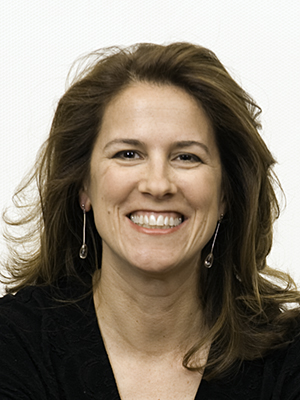 September
07
September
07
Tags
Scientifically Ever After by Sarah Albee
Nerdy Friends, I’m excited to introduce you to my new book, Fairy Tale Science.
I’ve loved fairy tales since I was very young, although my older sister is fond of reminding me what a pain in the neck I was when our babysitters read them to us. I interrupted with lots of questions. For instance:
- Wouldn’t dancing around in glass slippers give Cinderella terrible blisters?
- Why didn’t the prince bring Rapunzel a rope? Or a pair of cutting shears so she could climb down her own braid?
- How is it that Sleeping Beauty’s parents didn’t assign their daughter a full security detail on her 16th birthday to make sure she didn’t come across a spinning wheel?
No matter how many times I begged to hear a story again, it never failed to elicit a deep emotional response from me. I was traumatized by the “Little Match Girl,” annoyed by the gullibility of Little Red Riding Hood, and appalled by the rude manners of the princess in “The Princess and the Pea.” And don’t get me started on the tale of “The Fisherman and His Wife,” who wasted their three wishes—I had my three wishes all prepared and at-the-ready, just in case a genie showed up.
While of course I always knew that the stories were fictional, as I studied more history, I came to understand that some of the plots, improbable and fanciful as they were, reflected what pre-modern-era people thought and feared, and the challenges they faced. I wondered which details in each tale might be scientifically plausible, or based on actual historical events.
I learned that it wasn’t so long ago that otherwise rational people believed in magic, and giants, and witches. At times when the average man stood just a few inches over five feet, someone a few inches over six feet would have been considered a giant. People often crafted stories that hinged on phenomena they didn’t understand. And today, in our modern world, what once looked like magic is now routine in our daily lives. We’ve gone from “Open Sesame!” to “Alexa, unlock the door.”
Every chapter in the book begins with a synopsis of a tale, followed by a scientific question about some element of the tale, and hands-on experiments. A number of the tales are familiar to American kids (thanks, Disney!), but because so many stories have deep roots in far-flung parts of the world, I added “tale origins” boxes to show kids that many of the tales co-opted by the Grimm brothers and Perrault were not European in origin.
Here is a peek at the way the book works, with a few examples of some science-based questions:
- (For Sleeping Beauty): Could a person die from a prick to their finger?
Yes. In pre-penicillin days you could easily die from a prick to your finger, or any simple puncture wound or cut. In the “Explore the Science” section readers learn about the history of the discovery of penicillin, and in the “Try This” section they can grow a penicillium-type mold.
- (For Jack and the Beanstalk): Could giants with human proportions exist?
No. In the “Explore the Science” section readers learn about how all terrestrial organisms, from a tiny fruit fly to a giant seismosaurus, are shaped to their advantage by natural selection, and that they are ruled by gravitational forces. The legs of large terrestrial organisms must hold up a body increasing in weight by the cube of its length. So even if a giant that were, say, four times Jack’s height existed, his legs would be so massive that he could never chase Jack nimbly down the beanstalk.
- (For Rumpelstiltskin): Could straw be turned into gold?
Um, sort of? In the “Explore the Science” section readers learn about plants that absorb metals, so it’s possible for straw to contain (trace amounts) of gold. Then readers perform experiments to learn about capillary action and cohesion.
And the fun doesn’t stop there!
- For “Goldilocks and the Three Bears,” we determine whether the hot/cold/just-right temperatures of the three bowls of porridge violate Newton’s law of cooling.
- For “The Frog Prince,” kids perform buoyancy experiments, including how an object’s density affects its ability to float.
- For “Rapunzel,” we test the ultimate tensile strength of human hair.
Nerdy Friends, I hope this book will spark curiosity in all of your readers—both kids who love STEM and kids who love stories. Because sometimes science can seem truly magical.
 Sarah Albee writes nonfiction science and history books for kids, ranging from preschool through middle grade. Recent titles include Accidental Archaeologists: True Stories of Unexpected Discoveries, North America: A Fold-out Graphic History, and Poison: Deadly Deeds, Perilous Professions, and Murderous Medicines. She can’t wait to visit schools in-person again.
Sarah Albee writes nonfiction science and history books for kids, ranging from preschool through middle grade. Recent titles include Accidental Archaeologists: True Stories of Unexpected Discoveries, North America: A Fold-out Graphic History, and Poison: Deadly Deeds, Perilous Professions, and Murderous Medicines. She can’t wait to visit schools in-person again.











Oh my goodness! I’m not sure I’d heard about this book. Putting in a request for an order right now!
Thanks Annette!
Brilliant concept.
In my new book for educators, STORY FRAMES, one of the chapters is about bridging the gap between narrative and expository writing. It sounds like your book is a nice combination of the two. I will be sure to include your title in my teacher trainings. Do you have other information or links on that topic?
Carolee–I wrote an essay on that very topic (expository vs narrative style in my own writing) for Melissa Stewart’s blog. I believe it will be posting fairly soon. (And Melissa’s blog is well worth checking out if you haven’t already–lots of info about writing styles/genres there.)